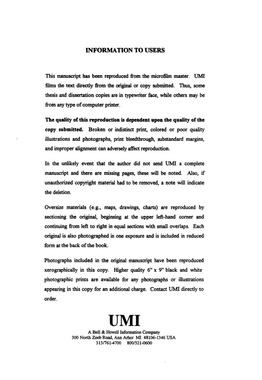| dc.contributor.advisor | Kramer, Eric Mark, | en_US |
| dc.contributor.author | Lee, Soobum. | en_US |
| dc.date.accessioned | 2013-08-16T12:29:48Z | |
| dc.date.available | 2013-08-16T12:29:48Z | |
| dc.date.issued | 1997 | en_US |
| dc.identifier.uri | https://hdl.handle.net/11244/5505 | |
| dc.description.abstract | Jeans ads provide an excellent example of how Western consumer culture has influenced Korean advertising and raise the issue of cultural colonization. Essentially, jeans retain traces of their Americanness wherever they are sold. In this sense, the worldwide proliferation of American cultural commodities suggests a new aspect of cultural homogenization. | en_US |
| dc.description.abstract | In conclusion, such an analysis makes clear that the uniqueness of Korean advertising is not displaced by its future configurations, but rather integrated into the new consumer culture. That is, Korean culture creates its own uniqueness by combining Western and traditional components. Therefore, this study contributes to the area of investigation using a semiotic approach on the basis of a Gebserian perspective. | en_US |
| dc.description.abstract | This study attempts to interpret the ideological structure as it appears in Korean advertisements with a close attention to English expressions appearing in these ads. Such expressions comprise indications of Westernization. In addition, Korean ads work by using English as a "systematically distorted communication" using the magical structure of consciousness. | en_US |
| dc.description.abstract | The overall form of this research may be divided into two sections: The first section of this study deals with the theoretical foundations for analyzing ads, including (a) advertising as a consumer culture, and (b) Gebser's notion of plus-mutation. The second section analyzes Korean advertisements appearing in various magazines and TV based on the theoretical foundations of the first section. | en_US |
| dc.description.abstract | The purpose of this research is to articulate the relationships between the cultural forms of advertising in Korea and the underlying ideological message. Specifically, this study interprets the structure and content of individual advertisements. This study employs a semiotic method as an analytical framework. Because semiotics makes it possible to connect the underlying meaning of an advertisement with its function within a culture. | en_US |
| dc.description.abstract | Korean Nike ads attempt to create magical and mythic structures using the image of Michael Jordan in order to persuade customers. The mythic process of shifting the signified to the status of signifier in Nike ads makes them the form of the perfect meta-structure of mythology. For Koreans, however, the Nike ad serves as the simulation of the real world because this ad creates the (hyper)real world of a utopia. | en_US |
| dc.format.extent | xi, 193 leaves : | en_US |
| dc.subject | Korea (South) Social life and customs. | en_US |
| dc.subject | Business Administration, Marketing. | en_US |
| dc.subject | Advertising Social aspects Korea (South) | en_US |
| dc.subject | Sociology, Theory and Methods. | en_US |
| dc.subject | Consumers Korea (South) Attitudes. | en_US |
| dc.subject | Mass Communications. | en_US |
| dc.subject | Language, Rhetoric and Composition. | en_US |
| dc.title | Colonizing consumer culture: A semiotic analysis of the Korean advertising. | en_US |
| dc.type | Thesis | en_US |
| dc.thesis.degree | Ph.D. | en_US |
| dc.thesis.degreeDiscipline | Department of Communication | en_US |
| dc.note | Adviser: Eric Mark Kramer. | en_US |
| dc.note | Source: Dissertation Abstracts International, Volume: 58-05, Section: A, page: 1489. | en_US |
| ou.identifier | (UMI)AAI9733699 | en_US |
| ou.group | College of Arts and Sciences::Department of Communication | |
